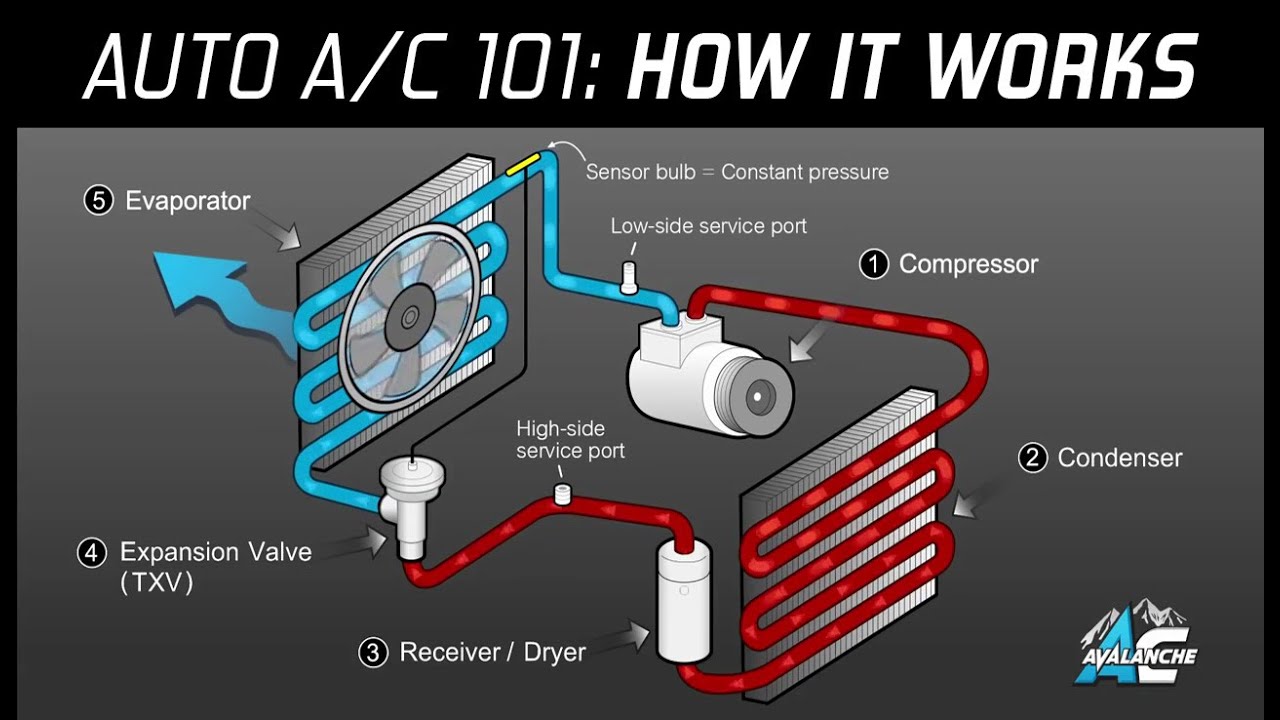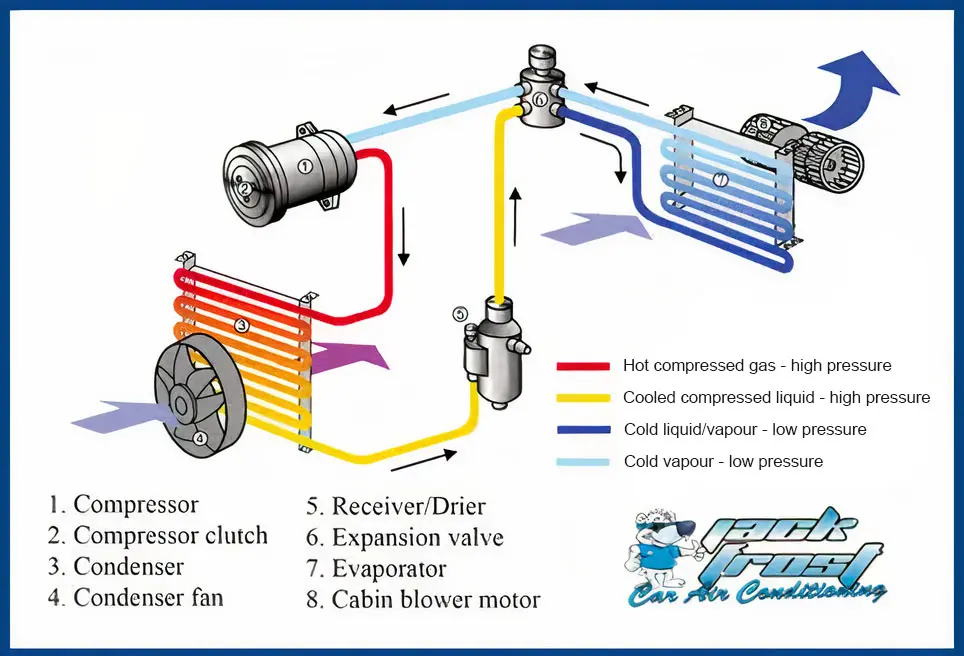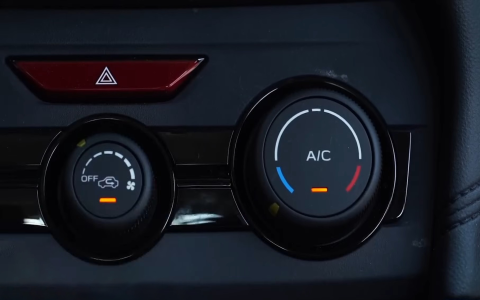Key Components of a Car A/C System
A car air conditioning system has five main parts that work together to cool the air inside your vehicle.
- Compressor: This pumps and pressurizes the refrigerant, turning it into a high-pressure gas.
- Condenser: Located at the front of the car, it cools the hot refrigerant gas, converting it to a liquid.
- Receiver/Drier or Accumulator: This removes moisture and debris from the refrigerant.
- Expansion Valve or Orifice Tube: It reduces pressure, causing the refrigerant to expand and cool rapidly.
- Evaporator: Inside the cabin, this absorbs heat from the air, cooling it before it blows into the car.
How the Car A/C System Works Step by Step
Follow these simple steps to understand the cooling process, based on a typical diagram flow.
-
Compression: The compressor draws in low-pressure refrigerant gas and compresses it, increasing its temperature and pressure.

-
Condensing: Hot, high-pressure gas moves to the condenser. Here, outside air cools it down, turning it into a high-pressure liquid.
-
Filtering and Drying: The liquid refrigerant enters the receiver/drier or accumulator, where impurities and moisture are removed.
-
Expansion: Refrigerant flows to the expansion valve or orifice tube. This device lowers the pressure, making the liquid expand into a cold mist.
-
Evaporation: The cold refrigerant passes through the evaporator. Air from the cabin blows over it, absorbing heat. This cools the air, which is then blown into your car for comfort.
This cycle repeats continuously, with the compressor restarting to maintain cool air flow. Always check refrigerant levels and components regularly for efficient operation.


